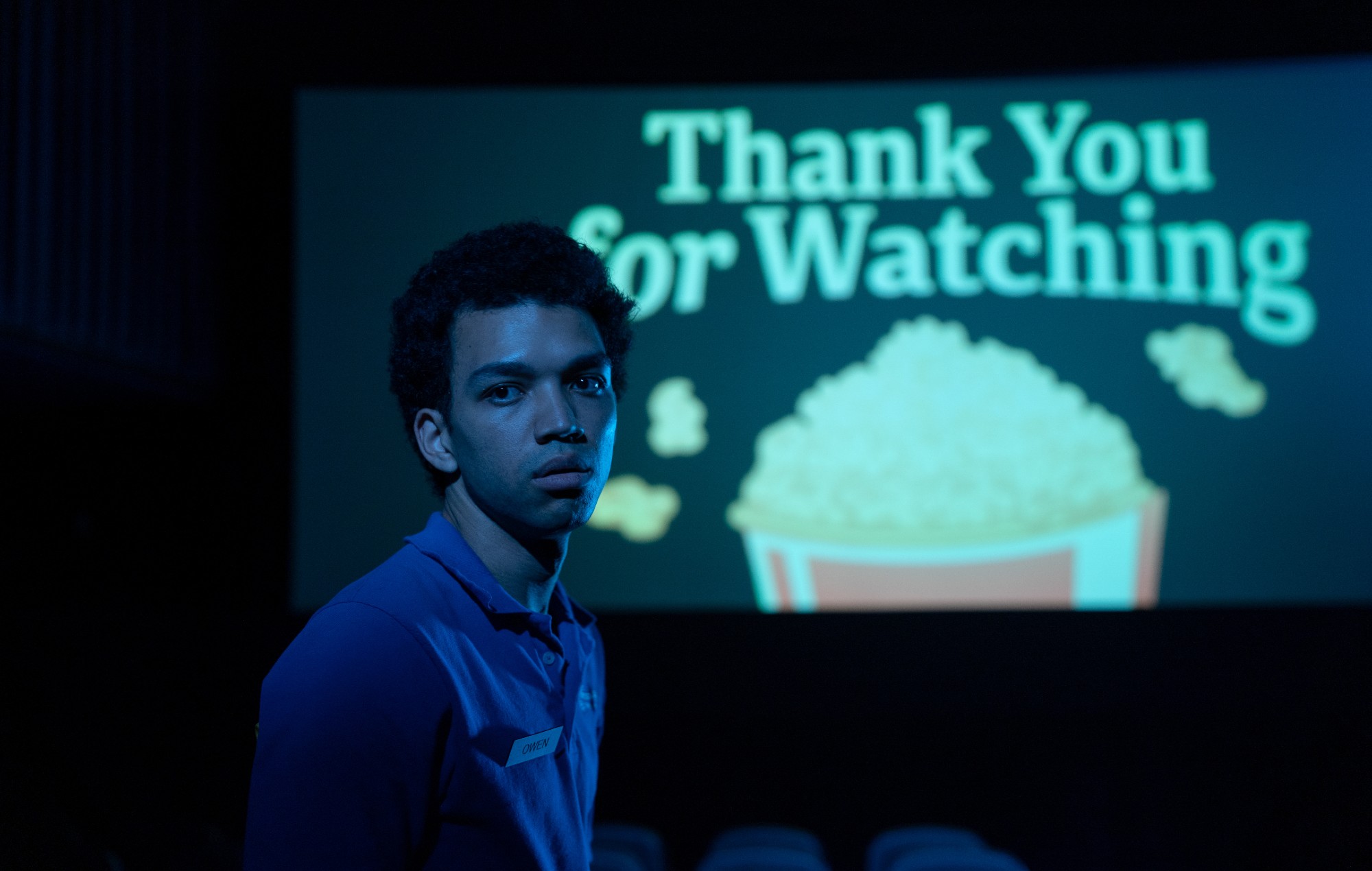A queer-leaning sci-fi/horror, I Saw The TV Glow is a game-changer in American independent cinema. An instant cult movie, it borrows from an array of influences, ranging from David Cronenberg’s Videodrome to TV perennial Buffy the Vampire Slayer, to create something utterly unique around the theme of otherness.
The latest film by Jane Schoenbrun follows on from 2021’s We’re All Going to the World’s Fair, which could be seen as a coming-of-age psychological horror that deals with gender identity. The story goes that Schoenbrun, who goes by they/them pronouns, discovered they were trans during a mushroom trip whilst writing the script for World’s Fair..
The second part of Schoenbrun’s intended ‘Screen’ trilogy, I Saw The TV Glow continues exploring similar issues in a refined and rarefied way. It also gives a killer role to Justice Smith who is best known – to dinosaur fans anyway – as Franklin Webb, the scream-king seen in Jurassic World: Fallen Kingdom.
‘I Saw The TV Glow’. CREDIT: A24
I Saw The TV Glow begins in the mid-1990s when isolated youngster Owen (Ian Foreman) meets the older Maddy (Brigette Lundy-Paine) in high school. She’s reading an episode guide to late night TV show The Pink Opaque (a nod, incidentally, to the 1986 compilation album by the Cocteau Twins). When she invites him over to watch an episode, he’s immediately taken by this sci-fi about teens Isabel and Tara, who fight against evil adversary Mr. Melancholy.
As their friendship develops, Maddy starts taping episodes of the show for Owen to watch – on account of his father Frank (Limp Bizkit’s Fred Durst) refusing to let him watch a show he considers for girls. Maddy admits she’s a lesbian to Owen, who is also uncertain about his own sexuality, but things get increasingly strange from here. Maddy disappears and The Pink Opaque is mysteriously cancelled.
Eight years later and Owen (now portrayed by Smith) is working in a movie theatre. When Maddy makes a surprise return, she informs him that she ‘disappeared’ into the world of The Pink Opaque, as reality and fiction begin to blur into a vortex of bizarreness. Schoenbrun’s cunning script reads like an allegory of transition, making it a film that will surely be looked back on as one of the great works about trans identity.
With its neon aesthetic, TV Glow’s final third is increasingly trippy, as Owen also starts to merge into the fictional world of The Pink Opaque. It’s here where the Cronenberg references loom large (and indeed Tobe Hooper’s Poltergeist), but Schoenbrun’s film never feels derivative; instead, there’s something fresh and exciting about it, despite the almost deliberate slow-burn feel to its pacing.
Led by Smith and Lundy-Paine, both excellent and committed in their roles, this is a film that taps into so many issues, including memory, nostalgia and the way we consume media. When The Pink Opaque returns on a streaming service, near the end, it feels all too familiar – especially the idea that what we grew up on lodges in our brains in a way that’s divorced from reality. Expect it to leave you glowing.
Details
Director: Jane Schoenbrun
Starring: Justice Smith, Brigette Lundy-Paine, Fred Durst
Release details: In cinemas now
The post ‘I Saw The TV Glow’ review: an instant cult horror classic appeared first on NME.



